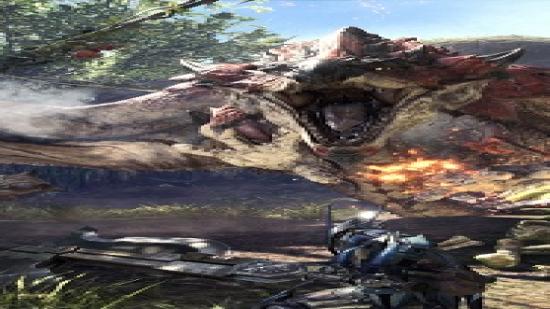Monster Hunter: World feels like the right kind of evolution for the series. The combat, crafting, and idiosyncratic charm that earned it a loyal fanbase remain, but are now framed in a world more open and rich than ever before. After playing the two quests offered in the demo, I found that all I wanted to do was spend more time running about the place.
What will you use to slay all those gigantic beasts? Get a proper look at Monster Hunter: World’s many weapons here.
That is, when I’m not sitting by a fire, at least. You can now change equipment, armour, and eat meals at a camp located on the hunting map. This not only saves a lot of time, but also allows you to experiment with the weapons much more easily. It’s worth putting in the time, too, as the game’s wide variety of blades, bows, and blunt instruments are a joy to use and master.
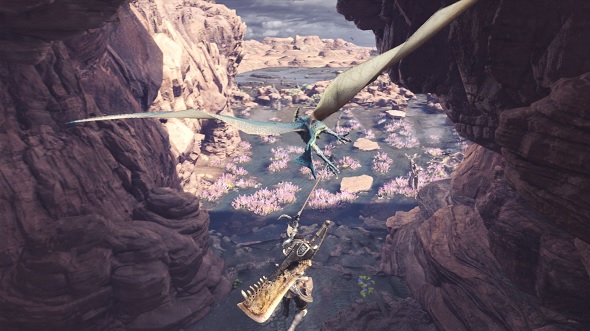
To start with, I take on the easier of the two quests: slaying a rotund, iguana-like Great Jagras. I begin my hunt and move between different parts of the map with no pesky loading screens to interrupt my exploration. The area is enormous and layered – although the numbered segments of the map from previous games remain, the topography feels a lot more cohesive than before. The world is filled with life and detail. A variety of small animals scarper when I approach, different types of long grass provide cover, and ants march in a line beneath my feet.
It’s almost a shame to disturb the peace when I finally track down a Great Jagras. But doing so is worth it: combat turns out to be thrilling. Landing a solid hit feels incredibly satisfying, and jumping on a monster’s back is as exhilarating as always.
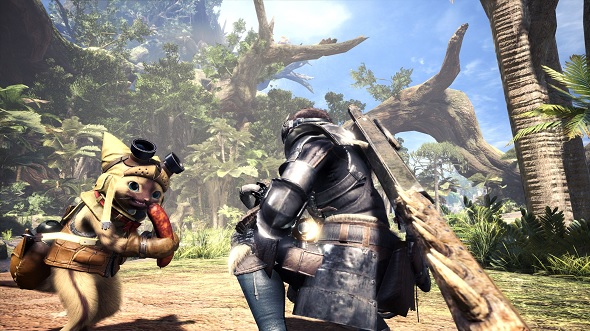
That’s all very well, but it’s not until I take on the harder of the two quests provided that I have some real ‘wow’ moments. At one point, I am chipping away at the health of a huge monster, when all of a sudden Great Jagras turns up and attacks it. My quarry then grabs the Great Jagras in its jaws, shaking it until it becomes limp and lifeless. While all this is going on, I manage to heal myself and attack the precious tail of the huge beast. I make a strategic retreat and lead the monster into some vines, in which it becomes entangled, then I deal the final blow. These are just two examples of the many ways you can use the environment – and other monsters – to your advantage during quests.
Monster Hunter: World feels less static and rigid than its forebears. There’s no more standing about forever as you collect herbs, the combat has fewer instances where you’re glued to one spot, mining takes less time, and you can now drink a potion while walking instead of coming to a complete stop.
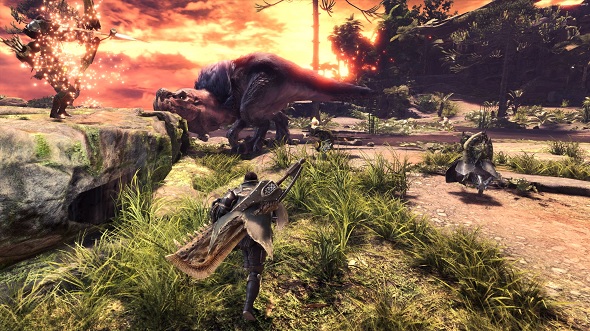
Another new addition, scout flies, highlight the tracks of monsters – once enough information has been gathered, they lead you straight to your target. Scout flies can be upgraded, and once suitably bolstered can even lead you directly to a monster’s nest. These helpful creatures essentially eliminate aimless wandering, and replace the paintballs from previous games that tagged monsters on your map for a short time. But while sniffer-bugs might be a much more efficient way of getting to your quest, it takes a bit of the fun out of the start of the hunt. Where before you had to really search for your foe, eventually learning where in the world they would most likely appear, these flies intrude on that sense of discovery by creating a luminous green trail for you to follow.
In the long run, these flies may actually be a better alternative to the paintballs – and it’s understandable that Capcom have tried to streamline a series infamous for its inscrutable design. However, with a trail to follow, it’s easy to fall into the old videogame trap of just heading to whatever’s highlighted rather than actually engaging with the world. This is particularly frustrating when the world is so dynamic and richly packed with detail.
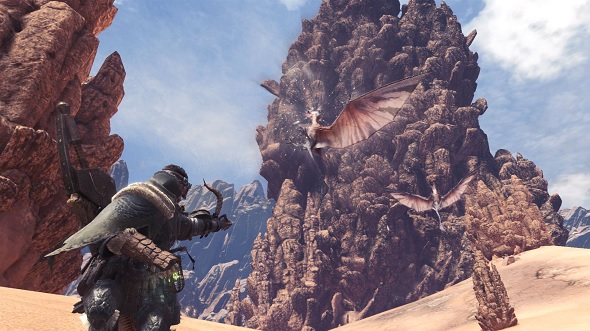
Ultimately, though, in a world so large my little paintball markers probably wouldn’t cut it anymore, such concerns don’t feel too major. What Capcom have managed to do is pretty special: they’ve increased the scope, while streamlining some of the rougher edges of previous games, but without making the whole thing feel overly simplified or watered down. Big new spectacle-inducing features sit alongside smaller tweaks that allow for a more cohesive – and approachable – experience overall. Fans of the series, as well as those not quite so familiar, should be very excited for World’s release.
